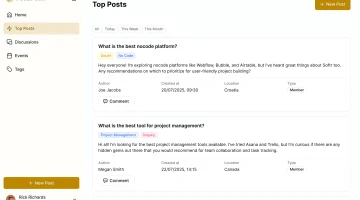
Simple Marketing For Entrepreneurs and CEOs.
Successful communication is a key success factor for business executives looking to build teams and drive company success. The article talks about how to be precise and brief with your answers, active listening, style shift and create a tone of transparency.
The honest leader will have employees who are interested in having transparency about sharing information without sweeping and obfuscation, and open to receiving feedback from their own colleagues.
Clear Communication
Communication is central to any successful team and/or organization – that means listening attentively, empathetically and thoughtfully in choosing channels or language.
One of the best ways to gain trust and collaborate is to get communicated from real leaders. People take the message well, especially when the sender seems like a real and passionate leader, and will be more willing to work with him.
Leaders who want to foster enunciation must stay away from jargon and parse the information into bite-size chunks, and observe when employees are most willing to communicate and make adjustments based on this – such as the time and platform employees prefer to be informed on. There are regular team meetings or town hall sessions which is a great way to share important news or information.
Active Listening
One of the major talents of the great entrepreneur is listening. This involves listening carefully to each person speaking and understanding the words with out interruption or comment from other persons.
Eye contact and facial expression are key components of empathy and listening, so cutting out noise by clearing the space or going somewhere quieter may also help.
Repeating yourself and a recap of what you’ve heard several times in an active listener session, shows you are paying attention, are engaging and are willing to discuss what they are saying and uncover assumptions. This will also show you care about the speaker’s voice as well as create meaningful connections.
Adapting Your Style
Leadership communication includes tailoring your style for various circumstances and audience, including active listening to gain a deep knowledge of the audience you’re speaking to, or formatting words to suit situations and delivery styles.
Leaders need to communicate clearly, communicate clearly and do away with terminology so as to reduce miscommunication and make everyone know what’s being said. Employing tools such as metaphors can also be used by leaders to make the amorphous real, thereby fostering trust and an environment conducive to working together and an open culture at the workplace.
Redefining your style of communicating in different mediums – whether they be in person or via email. This is important because it’s important to listen to the audience and any cultural cues to make sure that your message gets to the person it was meant for.
Transparency
Transparency is a leader’s favorite communication tactic for establishing trust and a culture of collaboration. Also, openness helps team members to feel like they have ownership in the process.
Openness asks executives to disclose their company’s vision, plans and challenges to employees – whether it’s something implemented across the board or a certain business function has a unique problem that its division needs to solve.
For example, good leadership communication requires being concise, listening, changing style, giving feedback, and emotional intelligence. These competencies enable leaders to better influence others and promote success in an organization.
Inspiring Mission
Well positioned communication promotes communication and the sense of common purpose to build trust which helps leaders guide their people toward performance.
Entrepreneurs must have the mission statement of the business as a central focus for their message and how each employee helps the business to prosper, as well as messaging on its vision and objectives.
During transition or transitional periods, managers must move quickly and clearly share their view of what is going on with their team members. Delays make workers even more unsure, and encourage gossip to grow. In addressing these types of scenarios, truthfulness and straightforwardness tend to work best – if you don’t understand something, just say so! Plain language and less jargon is also helpful.





